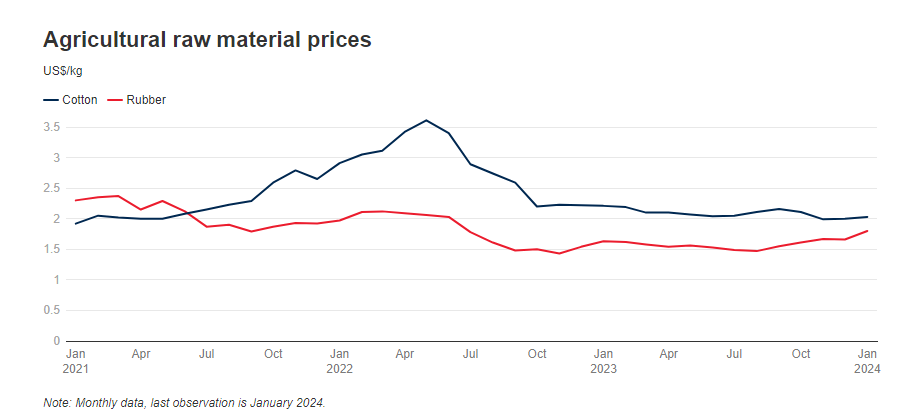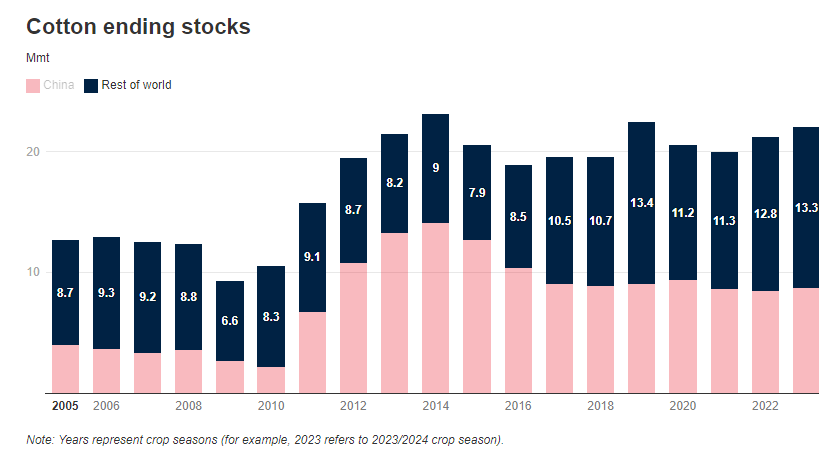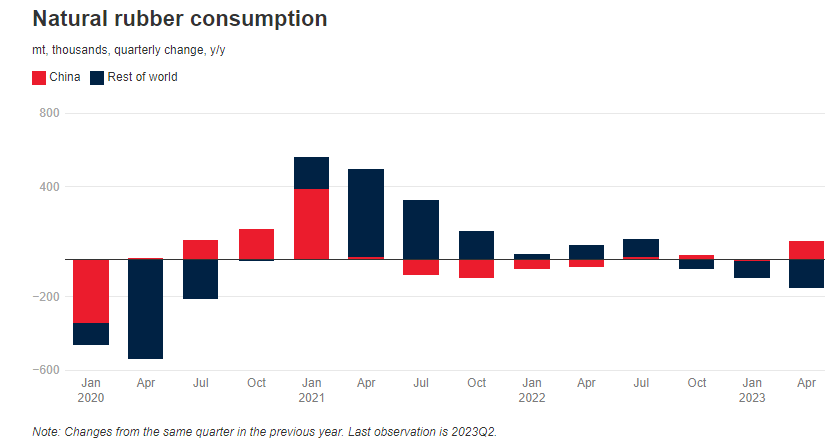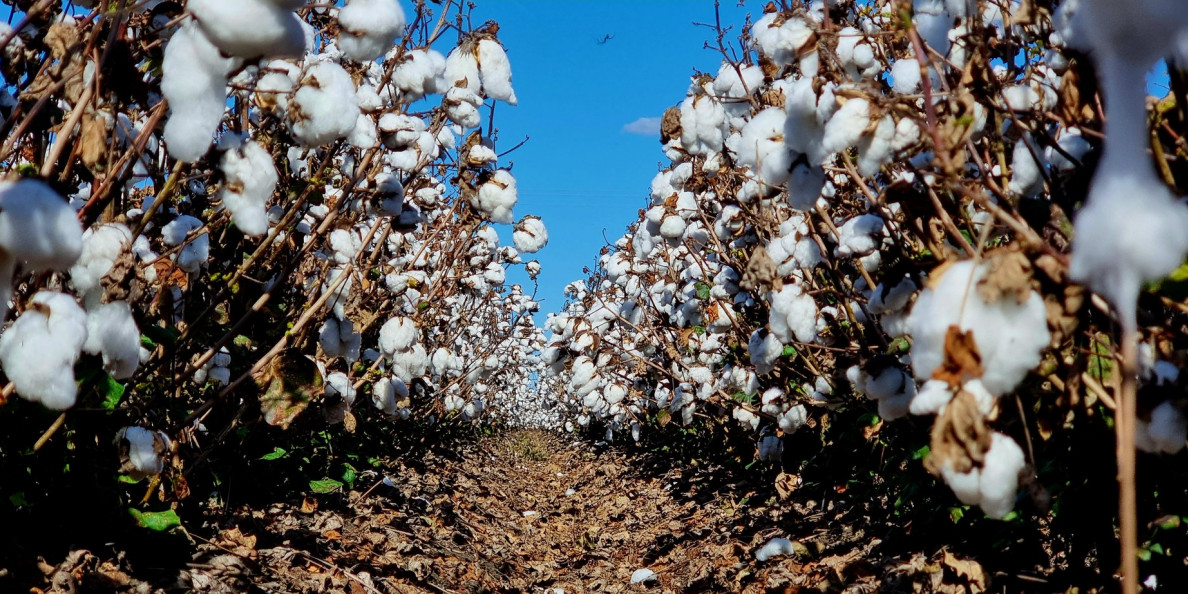This blog post is part of a special series based on the 2023 Commodity Market Outlook, a flagship report published by the World Bank. This series features concise summaries of commodity-specific sections extracted from the report. Explore the full report here.
The World Bank’s Agriculture Raw Material Price Index increased marginally in January 2024 (m/m), after sliding 1 percent in 2023Q4, in response to small gains in cotton and natural rubber prices. The index, which was 4 percent lower on average in 2023 compared to 2022, is expected to gain marginally in 2024 as demand strengthens. However, weaker-than-expected global growth remains a key risk to this forecast.

Cotton prices edged up in January 2024 (m/m), after declining by 4 percent 2023Q4. Prices were 27 percent lower in 2023 compared to 2022, as global production continued to outpace demand. Last year’s drop was in response to an 8 percent decline in global consumption, attributed to concerns of a slowdown in global growth. During the ongoing season that started in August 2023, a slight recovery in demand of 0.4 percent is expected, while global production is projected to decrease by an estimated 1 percent. Major producing countries, including China, India, and the United States, are expected to experience production declines. Nevertheless, the global stock-to-use ratio (a rough measure of supplies relative to demand) is projected to remain relatively stable at 0.93 in the current season. Cotton prices are likely to rise modestly this year as demand gains momentum amid falling production.

Natural rubber prices continued to increase in January 2024, supported by robust demand. Prices rose by 9 percent (m/m) in January 2024, following a similar increase in 2023Q4. Rubber demand remained resilient in 2023, supported by a recovery in the auto sector, which accounts for nearly two-thirds of global rubber consumption. Despite lower tire production in Brazil, Germany, South Korea, and Russia, global rubber demand rose by 1.4 percent in 2023 (y/y), with increases in China, India, and Thailand compensating for the decline. Weather-induced output declines in Thailand, the world’s largest natural rubber supplier, and Indonesia, were only partially offset by increases in India (+2 percent) and Côte d’Ivoire (+22 percent). Natural rubber prices are expected to gain nearly 4 percent in 2024, driven by a recovery in global consumption.



